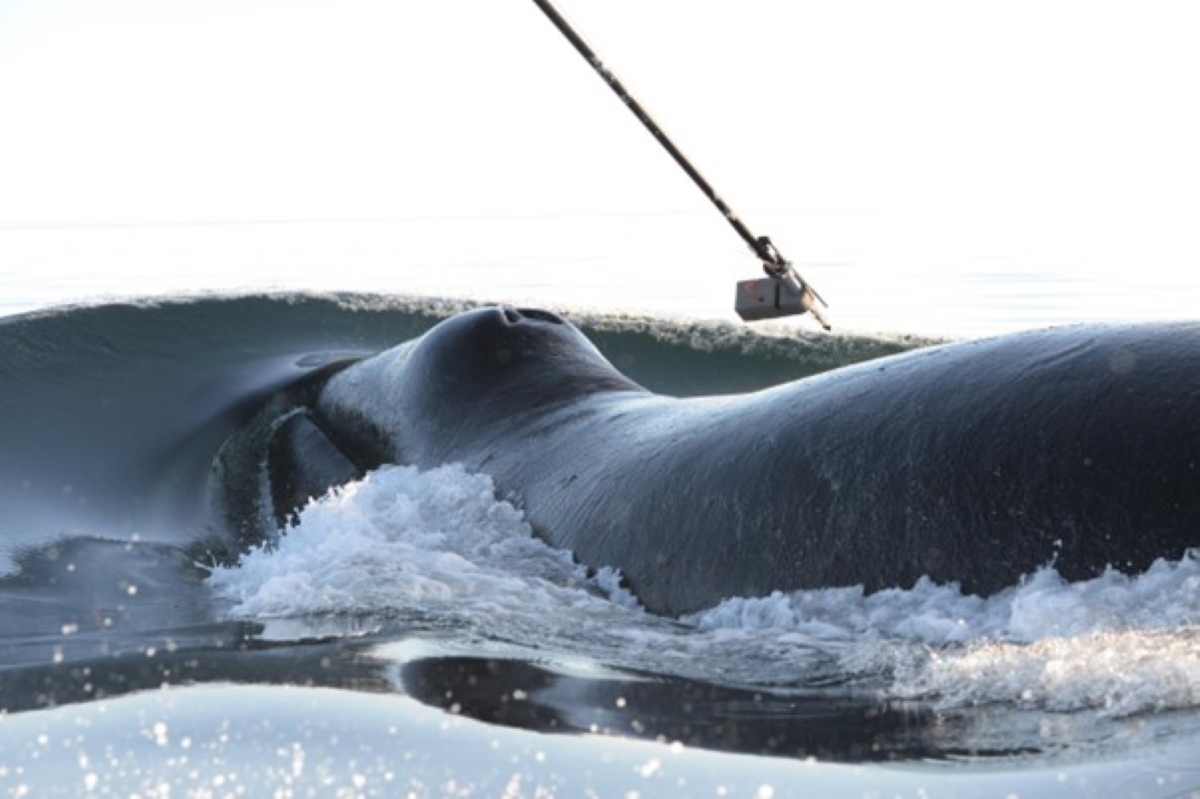“Now we dive!” – bowhead whales coordinate over long distances

By Rasmus Balle Hansen
Bowhead whales follow the movement of zooplankton up and down through the water column, according to a new study. The research, conducted in collaboration between Denmark, Greenland, and Japan, brings new knowledge to the surface.
In the afternoon, the whales dive deepest, as many organisms, including zooplankton, move from the deeper and darker water layers up towards the surface in search of food. During the day, the organisms move deeper to avoid predators.
“Some believe that they’re singing, others think they’re calling.”
– Mads Peter Heide-Jørgensen.
However, according to one of the researchers behind the study, Mads Peter Heide-Jørgensen, a professor at the Department of Birds and Mammals at the Greenland Institute of Natural Resources, this is not the most surprising result of the study.
“The most surprising finding was that there were signs of synchronization, meaning they dived at the same time.”
Over a total of 144 days, researchers monitored the behavior of 12 whales. Among these whales, two particularly stood out. Over a period of more than a week, the behavior of these two whales was tracked, and the researchers discovered that they started and ended their dives at the same time. This was determined using instruments and satellite transmitters.
“We could show that two whales for over a week started and ended their dives at the same time, as long as they were within about 100 kilometers of each other,” says Mads Peter Heide-Jørgensen.
Whale Song
When bowhead whales communicate, they use a variety of sounds and frequencies, also known as whale songs.
“They’re constantly saying something. Some believe that they’re singing, others think they’re calling,” says Mads Peter Heide-Jørgensen.
When they are close to each other, they use high-frequency sounds, while they use low-frequency sounds when the distance between them is greater. The deep, low-frequency sounds can be heard over distances of more than a hundred kilometers.
“High-frequency sounds are used to identify something nearby. Low-frequency sounds, like a type of hum, are used to communicate over long distances. It’s through these sounds that the whales can coordinate their behavior and, for example, signal ‘now we dive,’” continues Mads Peter Heide-Jørgensen.
“We could show that two whales for over a week started and ended their dives at the same time.”
– Mads Peter Heide-Jørgensen.
Low-frequency sounds are deep tones that can travel far without losing strength. This is because water is denser than air, meaning sound travels faster and more efficiently.
Future Studies
According to Mads Peter Heide-Jørgensen, the study opens up new ways of understanding our environment and the species we live alongside. Every discovery, even without definitive conclusions, brings us closer to understanding these complex relationships.
Therefore, the researchers behind the study encourage their colleagues to continue investigating the behavior of bowhead whales, both to confirm whether their interpretation is correct and to extend the research to other whale species.
If you want to know more click here.
Photo: Bowhead whales are being tagged in Disko Bay to track their movements and diving behavior.
By: Mads Peter Heide-Jørgensen